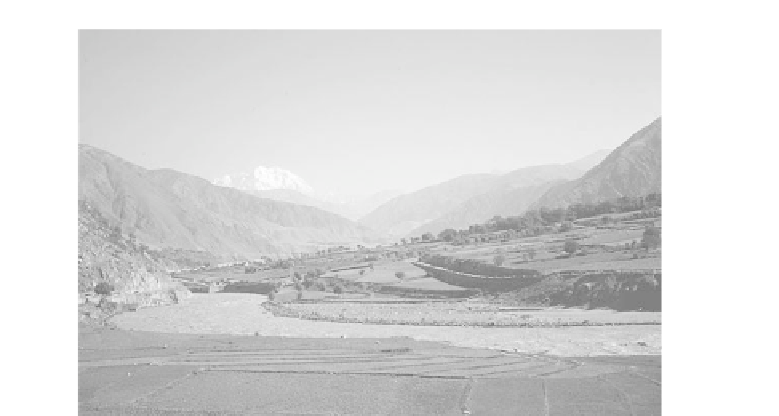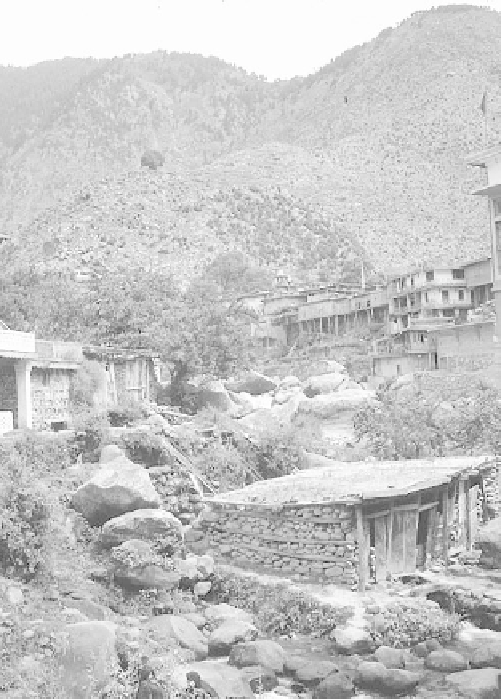Geography Reference
In-Depth Information
Figure 7-4
This scene shows Mount T Trich Mir , at 25,260 feet
(7,578 m). I took the picture overlooking the
Chitral River in northern Pakistan. The alluvial
terraces are irrigated by gravity flow of water .
Rice, fruit such as apricots, and vegetables are
grown here.
Photograph courtesy of B. A. Weightman
.
Figure 7-5
Here in the northern town of Bahrain, Pakistani houses cling to
the sides of the rocky slopes. The structures are made of wood and
stone with no mortar . The building in the foreground is a grain
grinding mill where water power turns the huge stone grinding
wheels.
Photograph courtesy of B. A. Weightman.
Cutting through the mountains are the Kabul and
Swat Rivers. These converge in the V ale of Peshawar, a
lowland separated from the Indus River by a sandstone
ridge. Under irrigation, the deep alluvial soils support
wheat, corn, sugar beet, and tobacco (Figure 7-6). In Pe-
shawar and other towns of the NWFP , Punjabis became
prominent in business. Peshawar was also a budding in-
dustrial center.
Waziristan
Waziristan, meaning “Land of the Wazirs,” is a rugged,
mountainous region bordering on Afghanistan. The re-
gion was independent until 1883 and was incorporated
into Pakistan in 1947. Although it looks small on the
map, Waziristan comprises 4,473 square miles
(11,585 km
2
).The area is divided into two agencies:
North and South Waziristan. There are some 800,000
related tribes living here. Perceiving themselves as war-
riors, the Wazirs are noted for their love of fighting.
Like all Pushtuns, they live by the code of
Pustunwali
.
Badal
—revenging blood feuds to protect
zan
—family ,
zar
—treasure, and
zameen
—land are central pillars of
this code.
The Wazirs, who have practiced
purdah
since at least
600 BC, also want to keep themselves pure—apart from
the influences of outsiders. Consequently , they live in
fortified, walled villages in the mountains. Since the
2001 invasion of Afghanistan, these villages have become
havens for the Taliban. At the urging of the United States,
the government of Pakistan has been shipping arms, re-
connaissance planes, and troops into the region to root
out militants—with limited success.


















Search WWH ::

Custom Search